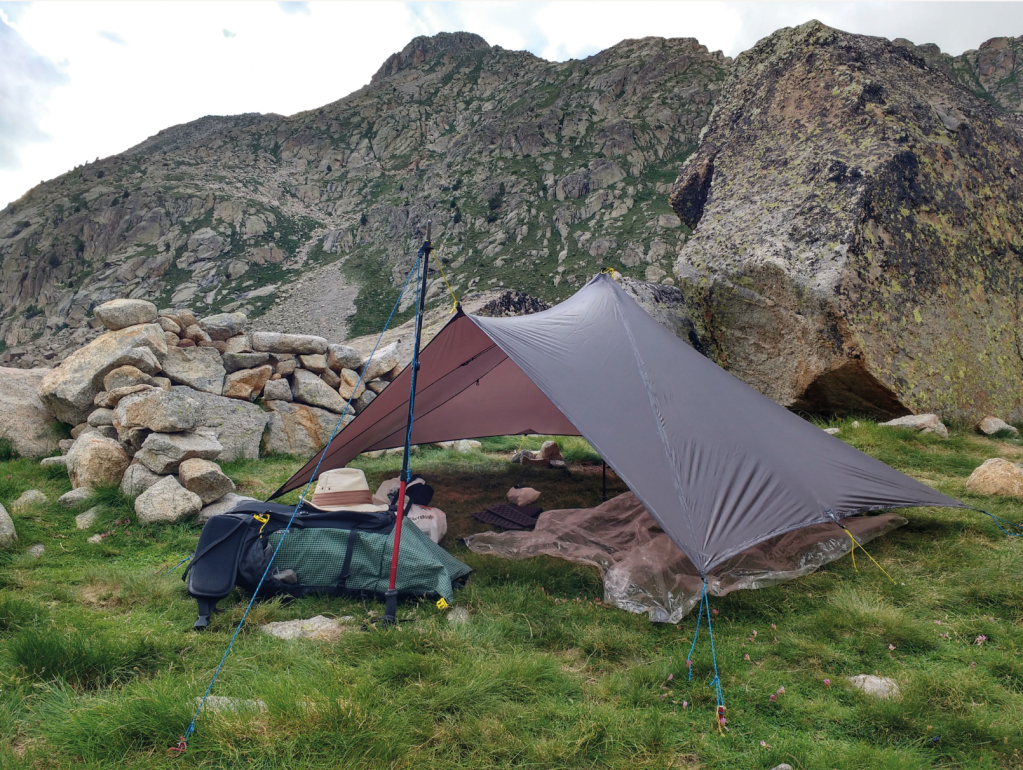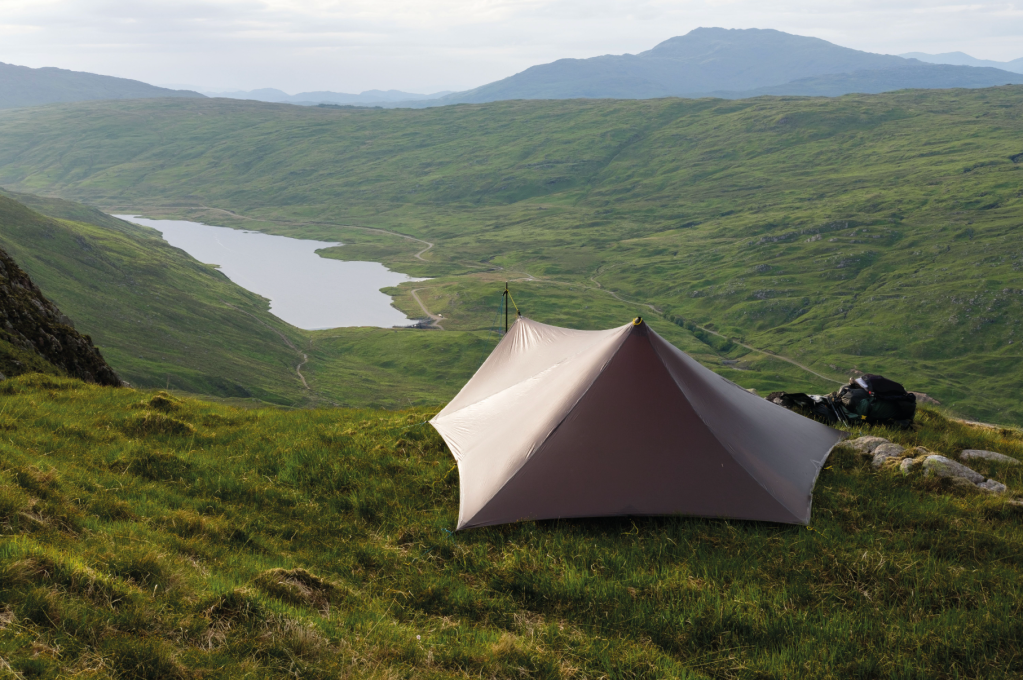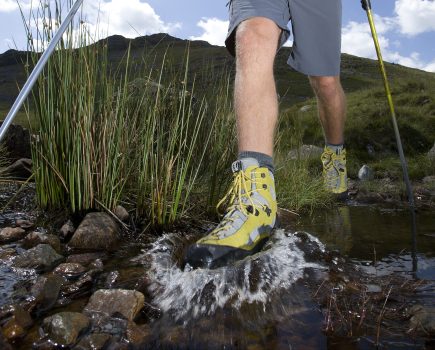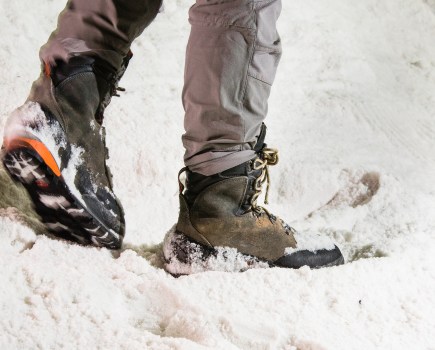Alex Roddie has survived his fair share of midge-infested camps. Here he shares his top tips on how to avoid midgies and alleviating the agonies of the next midgie apocalypse.
Midgies. The very word strikes fear into the heart of the most experienced hillwalker. In fact, it can be hard to explain the full horror of a midge attack to someone who has not experienced it, and I remember laughing off stories of Biblical midge plagues when I was younger. Many years later, I’m no longer laughing (at least not until the itchy bites have eased). Here’s what I’ve learned about how to avoid midgies – and how to manage when the worst happens.
Main image: Alex swarmed during a Fisherfield camp which went viral online | Credit: James Roddie
Although most associated with Scotland, the Highland midge (Culicoides impunctatus) is found in all British upland areas – and throughout Europe, especially Scandinavia. One of the worst midge incidents I have experienced occurred last summer in the North-West Highlands, when I was with the then-editor of The Great Outdoors, Carey Davies, and my brother James.
We selected what we thought would be an idyllic riverside spot for our camp. Up went the tents. When the breeze dropped, the midges descended – and didn’t let up until morning. We ate breakfast under siege. The resulting videos went viral on Instagram and thousands were amused by our misery.

The night before – it looked like such a promising spot. Credit: James Roddie
How to avoid midgies
Know your adversary
These tiny biting flies are smaller than you might think, with a wingspan of about 1.4mm, and only the female actually bites. They breed in wet areas and gather in enormous swarms that may contain millions of individuals. Such swarms can look like a cloud of smoke above the ground.
Although most active in July and August, they can appear from early May to late September. Midge populations fluctuate throughout this period. Fewer hatch in dry weather, but huge population spikes can occur if a wet, warm spell follows cooler or drier conditions. Dry weather in 2022 led to low midge numbers, whilst there was a huge spike in June 2023.
Female midges are attracted to dark-coloured moving objects that give off CO2. It’s thought they can also detect chemicals in the body odour of animals. Once the midge has latched on, it drinks its fill – and then releases a pheromone to attract more midges. This can result in a swarm attack.

September midgies in Glen Feshie. Credit: James Roddie
Midge-proofing your kit
Clothing choice is critical. A midge swarm will find every exposed millimetre of skin, so your priority should be coverage. Choose trousers or leggings that can be tucked into socks, plus a base layer or shirt with long sleeves and a collar. Midges can bite through some thinner, breathable materials, so consider a ‘bug shirt’ made of insect-proof fabric. These often have permanent insect-repellent treatments such as Insect Shield (they help, but aren’t a replacement for a head net and spray-on repellent).
Anecdotally, lighter colours may attract fewer midges – and have the added advantage of making ticks easier to see.
You need a midge head net. Make sure it has holes small enough to keep out midges, not just mosquitoes (suitable mesh is often marketed as ‘no-see-um’). Keep the net in a pocket and use it as soon as you feel midge bites. Tuck it inside the collar of your top. Some head nets will fit over a baseball cap, which helps keep the net off your face. Keep your head net in its stuff sack when not in use, as the delicate mesh can be damaged.

Inner-less tarp shelters can be a good option for summer, but only if you plan ahead. Credit: Alex Roddie
Midge repellents
I always carry a small spray bottle of midge repellent during midge season. There are several options, each with pros and cons, but I have found Smidge the best option. Its active ingredient,20% Picaridin (aka Saltidin), is considered safe and is unlikely to cause side effects. DEET is highly effective but is toxic and can damage outdoor gear.
You need to reapply repellent every few hours. I tend to spray it onto a palm and then massage it into my exposed hands and wrists, plus some on my face and neck to provide protection when I need to remove my head net.
Permethrin is the active ingredient in many insect-repellent clothes, but you can also get it in a spray bottle. It’s highly effective against ticks. However, it’s worth noting that permethrin is toxic to aquatic wildlife and cats, and may cause skin irritation for some people.
There’s a persistent myth that Avon Skin So Soft Body Spray is better than dedicated repellents, but this is scientifically unproven. Some people also swear by eating garlic.
Planning your day
Use the weather forecast. Midges are at their worst on warm, calm days, but cannot fly if the wind speed is above approximately 5mph (8kph). They are also less active when the weather is cool; a frost will kill them off. Online resources such as the Scottish Midge Forecast can also be helpful.

A sensible midsummer Scottish campsite choice – climb above the loch and find a breezy hilltop pitch. Credit: Alex Roddie
There tends to be fewer midges on high mountains due to the greater likelihood of cooler temperatures and a breeze. So, if you plan your route to climb onto exposed slopes more quickly, you’ll soon get out of the worst of it. Even then, calm conditions may still bring out the swarms.
How to avoid midgies when camping
If camping, your shelter must be midge-proof. Most tents already are. If using a lightweight tarp or tarp tent, consider adding a mesh inner; a bivvy bag with mesh hood also works, but living space is restricted and this can be miserable in a big midge swarm. I learned this the hard way.
Choose your site carefully. A higher, drier pitch is usually better. Avoid camping next to lakes, streams or boggy areas. The ideal site is on a ridge exposed to the breeze, pitched on firm, dry grass.
Minimise the amount of time your inner tent is open. Midges will be attracted to you and enter the tent en masse. Consider cooking outside, away from your tent, then make a dash for it and eat your meal behind your mesh defences!

Swarms of midgies at breakfast. Credit: James Roddie
Dealing with bites
Midge bites are itchy and painful, leading to red raised bumps that can take days or even weeks to go down. Some people experience an allergic reaction that can lead to more severe swelling and itching.
Try not to scratch the bites. I’ve found that antihistamines help to control the itching; even hay fever tablets make a difference. Antihistamine or hydrocortisone cream, applied to the bites, can offer more immediate relief (or, for a more natural remedy, calamine lotion).
You can also buy piezoelectric ‘click-it’ bite relief gadgets, but I’ve found them to be far less effective.
Read more: How to move fast in the mountains








